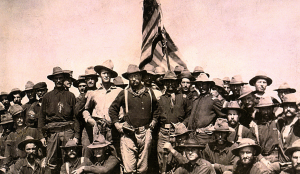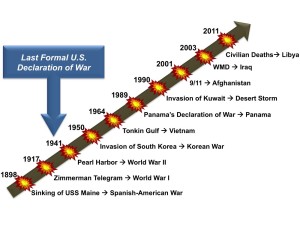Blown Slick Series #9
Seven Charts That Help Explain American War
- How Many Years In Its History Has America Been at War?
- Where Has America Fought?
- Why Has America Fought?
- How Does America Fight ?
- Who Are America’s Formal Defense Partners?
- Why Is the American Military So Attracted to Technology?
- So How Much Does It All Cost?
Give the focus of the Blown Slick series, upon reading this article by Aaron Bazin*, it seemed only natural to question what then is the impact of airpower on these seven and how is airpower influenced by how we approach the issues? In a concise way, the issues and charts highlight airpower usage in war and need to be one piece of Blown Slick’s airpower mosaic. Below are quotes from only two of the questions/charts. I will leave it to the reader to explore the complete article here.
Why has America Fought?
…it appears that the country commonly needs a tipping point-type event to push it out of the warm comfort of isolationism… What is dangerous about this attribute of American war is that if an adversary has strategic patience and settles for small gains, it can build incremental momentum without breaching the threshold of American outrage. If an enemy is clever and patient, it may be able to avoid ever awakening the “sleeping giant”.
Why Is the American Military So Attracted to Technology?
The American military is often attracted to technological solutions to the problems of war…over time, technology has increased the lethality and accuracy of weapons, which has driven an increased dispersion of forces. Combined with advances in force protection and medical care, there have been fewer battlefield casualties over time. Using technology for an advantage in one of these areas is tempting because the benefits are immediate and tangible at the tactical level
….Looking to the future, the American technological edge is not a foregone conclusion. With a densely connected information environment countries such as Russia, China, and even non-state actors, are quickly closing the technology gap. Innovation can come from anyone anywhere, and low cost commercial solutions can often create innovation quicker than the cumbersome American acquisition process
…Another risk for the U.S. is that by relying too heavily on technology it can lead to the tendency to solve low-cost problems with high-cost solutions. For example, if the U.S. uses an $80 million F-35 to kill a squad of insurgents in Afghanistan that are paid around $300 each a month, it does not take a calculator to figure out that insurgent groups could bleed America dry over decades through a death from a thousand cuts approach. On the battlefield, technological overmatch is an advantage, but is no panacea.
In closing, it is worth restating the Colin Gray’s comment presented in #8, Part 1:
Airpower is America’s prime military advantage, a benign condition that now has endured since 1943–44 and the more relevant militarily is airpower in the unique context of a particular conflict, the more probable is it that American arms will win.
Understanding Bazin’s presentation is extremely relevant to discussion of why fifth generation aircraft, why Ford class Aircraft carriers, why unmanned aerial vehicles, why a new long range bomber and how all fit together in a joint multi-warfare dimensional environment.
* Aaron Bazin is a career Army officer, FA 59 (Strategist) with experience at the combatant command level, NATO, and within the institutional Army.






